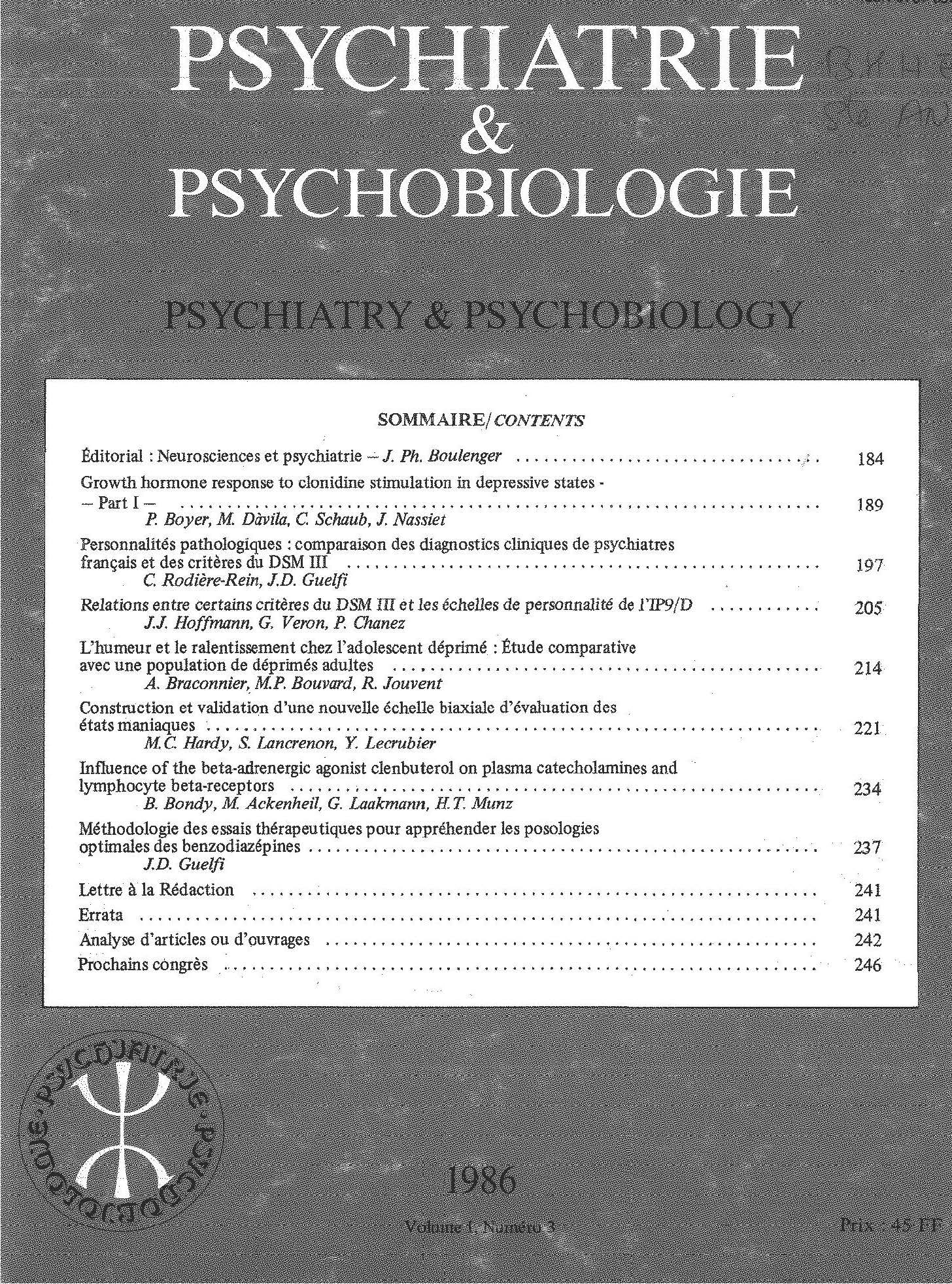No CrossRef data available.
Article contents
Possible antidepressant/mania-inducing effects of methionine: a reappraisal of the effects of methionine in chronic psychosis using modern diagnostic criteria
Published online by Cambridge University Press: 28 April 2020
Summary
The authors have reviewed 13 published studies on methionine administration, usually in combination with a monoamine oxidase inhibitor (MAOI), to chronically psychotic patients, using modern (DSM-III) diagnostic criteria. Four of these studies contained sufficient descriptive data to allow reappraisal of the effects. The results of the review suggest that a proportion of the patients experienced the induction of a manic episode/antidepressant effects rather than the reported worsening of schizophrenia while treated with a methionine-MAOI combination. It is suggested that these observations are consistent with recent findings that S-adenosyl-L-methionine (SAMe) has antidepressant and mania-inducing effects.
Résumé
Les auteurs examinent 13 études publiées sur l’administration de la méthionine, en général en association avec un inhibiteur de monoamine oxidase (IMAO) pour des patients psychotiques chroniques diagnostiqués avec la méthode du DSMIII. Les résultats suggèrent que certains patients font un épisode maniaque (effet antidépresseur) au lieu d’une aggravation de symptômes schizophréniques à la suite du traitement à la méthionine et IMAO. Ces observations sont en accord avec des études récentes montrant que S-adenosyl méthionine (SAMe) a un effet antidépresseur et peut déclencher un accès maniaque.
Keywords
- Type
- Original article
- Information
- Copyright
- Copyright © European Psychiatric Association 1989



Comments
No Comments have been published for this article.